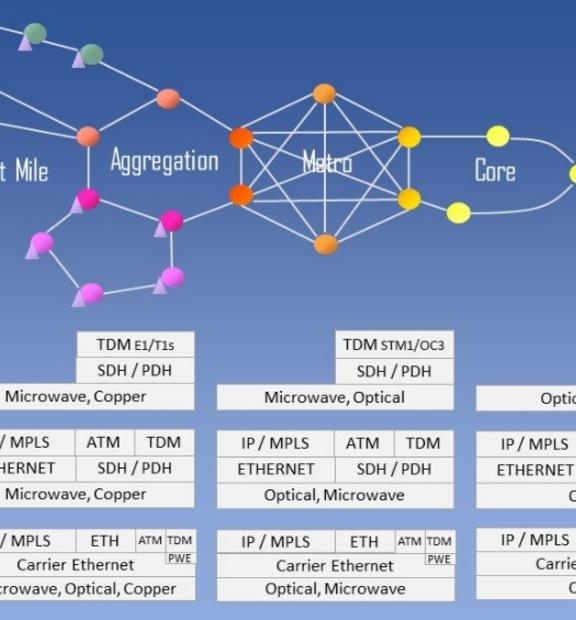In our last blog we mentioned we would have to delve into the history of the mobile backhaul to understand the tools mobile operators use today to assure mobile backhaul performance, and why they're not ready to deal with the inevitably complex scenario they will face. Now it is that time!
2G — The age of Fault Management and EMS-based Performance Management
One could safely say that managing backhaul performance has never been simple, but it used to be far less complex. Traditional 2G networks were deployed on top of circuit-switched TDM/SDH backhauls. In these networks, the circuit is either available or not available, and once established, parameters such as bandwidth, delay and jitter are guaranteed.

This deterministic nature of the backhaul meant the network performance was basically related to the circuits' availability, which could be measured via simple “up/down” indicators easily obtained via fault management tools or — more often — basic functionality of the element management systems (EMS) of the network equipment itself.
3G — Many Domains, Many Layers, Many Vendors and Many Performance Management Tools
For 3G, we often saw hybrid deployments where TDM/SDH co-exist with ATM, IP/MPLS and even Ethernet based backhauls. In this new scenario, traditional Fault and EMS solutions continued to be used.
However, MNOs started to use specialized performance management tools to manage the IP and Ethernet layers of the mobile backhaul. They did so because circuits would now share network resources and traffic could behave in a very statistical way — that is, bandwidth, delay, jitter and even availability would not be guaranteed (and therefore must be closely monitored).
As an inheritance of this age, many MNOs often have multiple tools to manage the backhaul performance, the number growing exponentially depending on the number of backhaul domains (Access, Aggregation, Metro), network layers and vendors they needed to monitor.
4G, LTE and Beyond — The Need to Unify Backhaul Performance Management into a Single Solution
Looking at today's mobile backhaul we see many mobile operators deciding to migrate the entire backhaul to fully convergent technologies such as IP/MPLS and Carrier Ethernet, effectively transporting all voice and data traffic on top of packet switched (PS) networks. Many MNOs also observed that the non-deterministic behavior of the lower microwave and optical layers of the network could also have a drastic impact on overall service quality levels.
If MNOs were already struggling to monitor backhaul performance in hybrid 3G scenarios, they came to realize that in this fully-convergent age, monitoring and troubleshooting the mobile backhaul with multiple disconnected tools became impractical. And this is the main reason why today we see a huge effort from MNOs in looking for a unified performance management tool that can help them to assure mobile backhaul performance in increasingly complex network scenarios.
Key Requirements for Mobile Backhaul Performance Assurance
So, this brief historical overview explains the situation that many MNOs are in today (multiple and disconnected tools to manage backhaul performance), and why today many of them are looking for a unified performance tool to help them assure complex mobile backhaul scenarios.
However — and this is a vital topic for this blog series — we need to discuss what key requirements such a solution needs to fulfill in order for MNOs to be successful in this enterprise — which we will be discussing in our next post.
If you are eager to learn the answers, we invite you to read our new white paper — Mobile Backhaul Performance Management — Challenges, Requirements, Benefits and ROI — where you can immediately find what these key requirements are.











